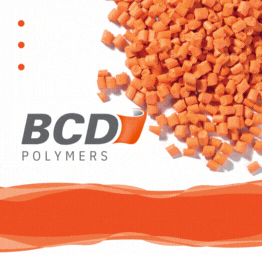The simulation was carried out with the aid of Moldflow®, using the example of a family mould with three cavities and a weight difference of 1:11 from the smallest to the largest component. ENGEL provided a duo injection moulding machine, detailed values, for example on the geometries of the nozzle used, as well as the sim link data interface for the direct connection of Moldflow® to the CC300 control unit of the injection moulding machine. Borealis provided the comprehensive, very precise data on the flow behaviour of the Daplen™ EE001AI polypropylene, and Oerlikon HRSflow contributed a servo-driven 8-cavity hot runner system that allows the volume flow to be controlled and thus each cavity to be filled individually.
In the traditional process, the parties involved do not discuss possible causes of faults and remedial measures until after sampling has been completed. In the project described here, optimisation with regard to temperature control, injection characteristics and all other pressure and time-related injection moulding parameters started jointly and immediately at the beginning of the simulation. The parameters determined in several iteration steps were then transferred to the machine via sim link. This data exchange between simulation software and injection moulding machine can take place in both directions. It thus also enables the analysis of process data, which in turn provides potential for process optimisation. Access to sensitive design data is not necessary.
The real production start-up underlined the high precision of the settings found via Moldflow®. The real filling behaviour and the positioning of the weld lines matched the simulation 100 %. The warpage behaviour of the largest part, the door trim measuring around 600 mm x 400 mm, was predicted to within ±2 mm, and the dimensions across the diagonal of over 650 mm were maintained with maximum deviations of only 0.04 %. After a few optimisation steps and without major manual readjustment, all three moulded parts met the quality requirements.
This joint project has not only shown that real production has run almost identically to the simulation, but the result also opens up potential for more sustainable production. For example, it is possible to see in the design phase whether a machine is suitable for the intended product or whether energy can be saved and production efficiency increased by using a smaller machine. In addition, the setting data suggestion developed in the simulation reduces the number of necessary setting cycles. This leads to fewer rejects and lower energy consumption during sampling.
Markus Kralicek, Business Development Manager at Borealis, Michael Fischer, Head of Business Development Automotive Technologies at ENGEL, and Stephan Berz, Vice President Sales at Oerlikon HRSflow and General Manager DACH, will report on the project itself and many additional details in a free, off-line webinar at https://www.hrsflow.com/ww/en/events/borealis-engel-oerlikon-hrsflow-webinar. In addition, the speakers will present the results during K 2022 at the Oerlikon HRSflow stand (Hall 1, Stand D10) on Thursday, 20.10.2022 at 4.30 p.m. and on Tuesday, 25.10.2022 at 4.00 p.m.



